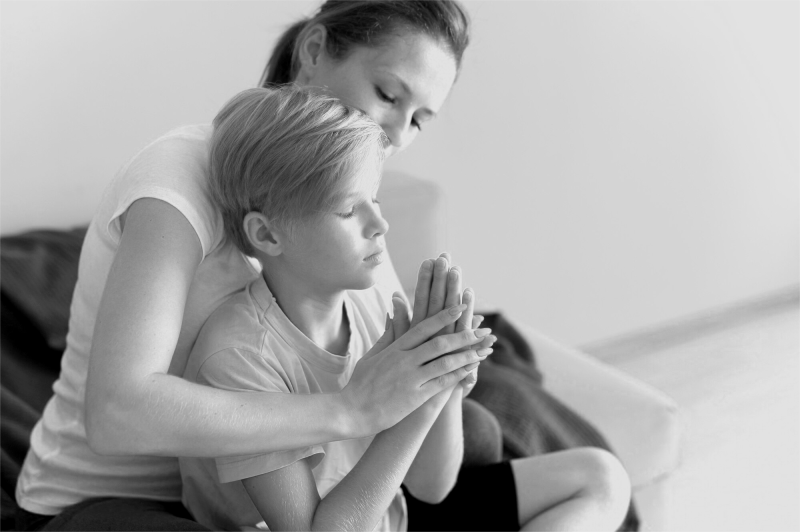Emotional regulation in parenting is one of those phrases that sounds like it belongs in a psychology textbook. But any parent who’s ever negotiated with a sobbing toddler over the color of their socks knows it’s very, very real.
Parenting a young child often feels like starring in a drama you didn’t audition for: surprise meltdowns, sudden joy, tears over spilled juice, and plot twists around bedtime. And whether you realize it or not, your response becomes a live lesson in how emotions are handled. Your child is watching. Always.
That’s where mindful parenting techniques come in. They’re not about staying zen while your child paints the wall with yogurt. They’re about noticing what’s rising inside you and choosing emotional control over reactivity. Why? Because the way you respond wires your children’s brains and determines their lifelong emotional health.
In this article, you’ll explore science-backed findings and practical, compassionate tools to support your emotional regulation. The goal is to help you show up intentionally and raise emotionally secure kids while staying anchored yourself. Keep reading to learn how to build emotional resilience in your home, starting with you.
Understanding emotional regulation in parenting
Emotional regulation in parenting refers to your ability to manage your feelings and behaviors in ways that support your child’s emotional growth. For children aged 3 to 7, whose emotional brains are still under construction, your calm presence becomes their external regulator.
Children at this age learn by imitation. They observe how you express frustration, joy, disappointment, and love. When you stay calm during stressful moments, you’re not just avoiding conflict—you’re wiring your child’s brain for emotional self-regulation.
How children learn from parental modeling
Children don’t come with manuals; they come with eyes wide open, watching your every move.
They learn to steer their emotions by studying how you handle yours. If you yell when overwhelmed, they know that anger equals volume. But if you, for example, pause, take a deep breath, and name your emotion — “I’m feeling really frustrated right now” — you’re giving them a masterclass in emotional intelligence.
But what makes this modeling so powerful?
According to Albert Bandura’s Social Learning Theory, children are like emotional copy machines. They don’t just absorb what you teach; they absorb what you do. They observe, imitate, and internalize the emotional choreography of your daily life, long before they even have the language to describe what’s happening.
Say your child knocks over a glass of milk. A yell might teach them that mistakes are met with shame. But a calm “Oops, let’s clean it up together” sends a very different message: Mistakes are manageable, emotions are safe. You’re still loved.
This is backed by neuroscience. Studies show that your regulation style helps shape your child’s stress-response system, like how their amygdala and prefrontal cortex communicate. So when you handle tension with calm, you’re helping their brain learn how to do the same.
So, the next time your child has a meltdown, remember this: the way you react will be absorbed. What you model becomes their blueprint for life.
Common challenges to emotional regulation for parents
Staying calm when your toddler is screaming over the wrong color cup takes Olympic-level patience. And on three hours of sleep, even the most mindful parent can lose it.
Stress, lack of sleep, work overload, and unresolved trauma can hijack your emotional brain.
Under pressure, your nervous system doesn’t care about your gentle parenting goals. It cares about survival. When you’re maxed out, your amygdala — the brain’s alarm bell — takes over, while your prefrontal cortex, the rational part that helps you pause and reflect, goes offline.
Now add poor sleep into the mix. One stormy night, and studies show your brain’s ability to regulate emotions drops dramatically. You’re not just tired — you’re chemically less capable of handling stress.
Plus, if you were raised in a household where yelling was the norm or emotions were shut down, those patterns don’t just disappear. Unresolved trauma sensitizes your system, making everyday parenting stress feel ten times louder.
For some parents, especially those with ADHD or emotional dysregulation, this becomes an even steeper climb. A Journal of Attention Disorders study found that parents with ADHD experience more emotional volatility, making it harder to pause, reflect, and respond thoughtfully.
The trick isn’t avoiding every trigger. It’s understanding the why behind your reactions. This way, you start building awareness and eventually make different choices. After all, parenting means being present, even when your nervous system wants to run.
Practical techniques for parenting with emotional regulation
While emotional regulation might feel like a skill you’re still figuring out mid-tantrum, the good news is you don’t need to be a guru to make real progress. There are proven, accessible techniques you can start using today — tools that help you model emotional control without losing yourself in the chaos.
These small, intentional shifts help you and your child develop vital self-regulation skills and shape a home where calm is modeled, emotions are safe to express, and empathy is a daily practice.
Mindful parenting techniques
Mindful parenting is about more than staying calm during chaos. At its core, it means slowing down, tuning into your emotional state, and responding to your child with clarity instead of reactivity. It’s about parenting with awareness, rather than autopilot.
Try these techniques:
- Pause before reacting. Take a breath, count to five, or place your hand on your heart.
- Name your emotion. Saying “I feel frustrated” helps diffuse its intensity.
- Use grounding tools. Tactile objects, like a stress ball, can help bring you back to the present.
These practices create a habit of parenting with presence, allowing you to respond rather than react.
Emotional self-regulation methods
Building your emotional toolkit means having go-to methods that keep you grounded when parenting gets tough. Here are a few practical, research-backed ways to help you stay centered and responsive:
- Cognitive reframing. Shift your inner dialogue from “Why won’t they listen?” to “They’re having a hard time, not giving me a hard time.“
- Journaling. Reflecting on emotional triggers can increase awareness over time.
- Pre-set intentions. Before a known stressful moment (like bedtime), remind yourself: “My calm helps my child feel safe.“
These tools support your emotional regulation skills over time.
Modeling calm during emotional storms
During tantrums or emotional meltdowns, your calm, regulated presence often says more than any lecture could. Still, your words matter too, especially when they’re intentional. Here are some simple, connection-focused scripts to try in the heat of the moment:
- “I can see you’re upset. I’m here with you.”
- “Let’s take some deep breaths together.”
- “We can talk when you’re ready.”
This approach helps your child learn that big feelings are manageable and that connection doesn’t disappear in challenging moments.
Read more: Nurturing Children’s Self-Regulation Through Play
Create emotional rituals and safe spaces
Consistent rituals offer emotional security by creating a structure your child can count on — even when emotions run high. Try integrating simple daily moments like:
- Emotion check-ins. Take a moment each day for everyone to name how they’re feeling. It normalizes emotional expression and builds self-awareness.
- Evening wind-down time. Spend 10–15 minutes before bed on a calming activity—like reading, soft music, or stretching — to help your child settle emotionally.
- Calm corners. Create a cozy space with comforting items where your child can retreat, breathe, and reset when emotions feel overwhelming.
These simple routines help nurture emotional literacy and build the everyday resilience children need to navigate big feelings with confidence.
Strengthen your own emotional toolkit
Emotional awareness means recognizing what you’re feeling, why it’s showing up, and how it influences your reactions.
Building it takes practice, but small, consistent steps can help you respond more calmly and intentionally when parenting gets tough. Try the following to strengthen your emotional foundation:
- Therapy or parent coaching
- Self-guided courses on emotional intelligence
- Reading books or listening to podcasts from credible sources
The more emotionally equipped you are, the more you can support your child.
Co-regulation: guiding your child through big emotions
This process involves supporting your child in managing their feelings until they can do it on their own. This approach is critical during early childhood, when independent self-regulation skills are still developing.
When your child is overwhelmed, try the following:
- Get to their level. Make eye contact and use a calm voice.
- Offer physical comfort. A hug, hand-hold, or sitting nearby can be grounding.
- Use simple affirmations. “You’re safe. I’m here.“
These moments are not about fixing the behavior instantly but teaching your child that emotional dysregulation is not dangerous or shameful—it’s human.
The goal of co-regulation is not control, but connection. With time, these supportive interactions become internalized, helping your child manage emotions more independently.
Read more: The Importance of Parent-Child Co-Regulation
In conclusion
Your child learns emotional habits not by what you say, but by how you are.
The way you handle frustration, joy, or stress sets the emotional tone of your home. When you invest in your emotional regulation, you offer your child a foundation of safety, empathy, and resilience. It may not always be easy, but it is always worth it.
To take the next step in parenting with presence, start by choosing one mindful technique to practice today. Your calm can become their calm.
If you want to see more resources on parent-child interactions, check out the Parenting Science Labs. The lab uses the research of the Institute for Life Management to produce courses, certifications, podcasts, videos, and other tools. Visit the Parenting Science Labs today.
Photo by Freepik


